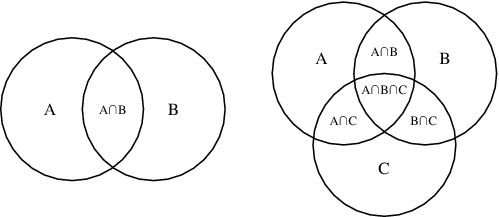100 words a day
I write #100words, almost every day. They are posted here and on LinkedIn. One hundred words exactly, almost every day.
Enjoy them.
Progress
This weekend I finished two things on my ‘project’ list for home organisation: one was finally clearing the (electronic) backlog clutter of over 250 articles to read, accumulated since July last year. The other was clearing the clutter in the spare room – which still held a pile of papers from the overseas trip taken in early March. That seems like forever ago.
It’s quite satisfying, of course, to finish a project or reach an achievement. What got me there was not the goals themselves, but the dedicated progress of doing a little bit each day for the past six weeks.
Predictable
I recently heard an interesting observation about human behaviour, patterns, and predictions.
It’s very difficult to predict what one person will do (ie, download an app, or take the next card in blackjack), but in a population of a million, there are predictable patterns.
I’m not sure how this fits in to anything I do these days, but someone out there is predicting what I might do. This is the science of statistics, I suppose, and we’re all a part of it.
It applies in elections, pandemics, risk management, economies.
Individually, we’re not predictable, but in a crowd, we are.
Productive
Something that has come into stark relief in the last six weeks, is how we define, describe, or prove productivity.
In my mind, it is hard to separate ‘productivity’ from ‘producing something tangible’. The word feels related to industrial production, like manufacturing work. That’s where productivity is clearly measurable.
Being “productive” is “getting stuff done”. And that ‘stuff’ needs to be tangible, provable.
But these days, perhaps we are realising that being productive can also be related to doing things that are just “consequential” rather than tangible. It should be plausible to be productive just “being” rather than always doing.
Explore
We’re often advised to “listen more”. Advice like: “we have two ears, one mouth… use them in that ratio”. It’s good advice, but not quite the right advice.
It’s possible to listen but not hear. The only way to know you’re listening, is if you’re able to explore the ideas and information being presented, with follow-up questions and curiosity.
Do more than “listen”: be curious. Listen with intent to find out more. And if you’re speaking, and the listener goes on after without exploring your input, then you may conclude they don’t actually want to know more about your ideas.
Error Handling
“Everyone makes mistakes”.
Sure, we know that; but, dealing with it is harder than that pithy line allows for.
Whether we are the one who made the error, or we are the one who finds it in someone else’s work, we are faced with a challenge. Cue the ego.
Managing egos is indivisible from managing errors, particularly in technical and design arenas.
So, it is in the organisation’s interest to have a solid ‘checking’ culture, where checking is not seen as a negative process. And when errors are found, there is a clear and supportive process to deal with it.
Output
In the built environment, a good engineer or technical expert will produce a document, or they will at least produce something tangible (this might not directly apply in the IT/Tech environment).
Good engineers demonstrate competence through their pictures and words. There’s no way around it: for a technical role, the output is tangible and “written” – whether a drawing or report or a calculation or a plan.
A manager or leader can do an excellent job of managing or leading, without necessarily producing a document. No competent engineer can do that: an excellent engineering job is defined by producing something tangible. If there’s nothing tangible, what was engineered.
Position Description
It’s not unusual that person’s daily tasks don’t fully reflect the position description that was presented in the beginning.
We have job titles, and labels and roles and positions and leadership tracks. And sometimes we do something else entirely, not related to those titles, labels or positions.
The important thing in knowledge work, is to use our knowledge to create a better business. Be aware of the importance of ‘doing’, as well as ‘showing’ knowledge. In a technical arena, your job title probably does not convey fully your technical ability, nor the skills needed to teach that knowledge to others.
Constraints
Paradoxically, adding constraints is a way to come up with new ideas. Reducing the options sharpens the focus and enhances creativity. Constraining the input has an opposite effect – it improves problem-solving ability.
It’s the same as the research into decision fatigue: with too many choices, or when we have already made too many decisions that day, our brains can struggle with the cognitive load. And so, we look for an easy way out.
Constraining options helps in several ways. Like right now, there are fewer options for how to meet, and so we are finding new ways to do that.
Original
One thing about writing, be it reports for work, turning in a term paper, or even just writing notes, is the need to come up with original thought.
Progress reports, team updates, even agendas and action items, require the effort of putting together thoughts and words that haven’t been put together before. That is hard work.
In the days of search engines, direct plagiarism is easily found, should one want to go to the effort.
Giving credit is an obligation; but then, defining the originator can be a challenge too. Enhancing others’ work is part of extending knowledge and improving.
Cognitive Bias
There are almost 200 named biases; they help us with decision making, social interactions, and memory errors.
Another way to consider biases is to think of which problem they are trying to solve.
With too much information, we use biases to filter quickly, by looking for repetition, or confirmation. When there is not enough meaning, we use stories or patterns to find the signal. Needing to act fast makes us simplify with overconfidence or status preservation. If there’s something to remember, stereotypes and editing show up.
Every cognitive bias we have, is used to save the brain’s energy or time.
Y2K
And in the end, ‘nothing happened’. Many of us will remember the late 1990s, when all thoughts turned to the bug in computers around the world. Some digital timekeeping stored 2-digits for the 4-digit year, so 1900 was indistinguishable from 2000.
Oh, the calamity predicted, and solved, at the time. So, when the clocks ticked over and we carried on, there was a cry that it was all a hoax and a beat-up.
I guess we’ll never know, because there’s no parallel universe where nothing was done, to compare.
This is risk management’s challenge: if it’s done right, nothing happens.
Stakes
A stake could be a wooden or metal post with a point on one end, or, more likely in this forum, a stake is something of value that depends on the outcome of an event, adventure or competitive situation.
In the second definition, stakes are the result, emotion, or thing that can be gained or lost, when you take chances.
Stakes are why we compete, why we go on rollercoasters, why we watch sports and why we sweat before job interviews.
When stakes are involved, it follows that risk is involved. When assessing risk, keep the stakes in mind, too.
Threes
There is symmetry in threes. Our brains like to think in threes, because it is a pattern: three is the lowest figure that can be used to form patterns in our mind. A good Venn diagram can demonstrate the value of three.
It happens elsewhere too – in triathlons, in the three acts in a play, or setting up for photography, trilogies in film, in making a point, in categorising, clustering, or organising.
Three golden threes that I like to keep on top of, for any project or goal, are:
• Project management triad: Cost/Scope/Schedule
• Productivity triad: People/Process/Tools
• Professional excellence triad: Risk/Quality/Competence
Need to KNow
New information doesn’t stick generally and reliably, unless you’re at a moment where you actually need to know it.
Education is different from training: education is a broader approach to information which might be used or needed at some time in the future. Training, or ‘learning on the job’, is just that: acquiring new information at the moment you need it.
Search engines make it so easy to search for facts you need “right now”. But when the knowledge needed is more nuanced, or judgement based, and you need to know the answer “right now”, that’s harder to search for.
Retrieval
Research shows a good way to learn is through retrieval: testing knowledge with flashcards, instead of simply reviewing a text over and over again.
While it might not feel like it, imposing the difficult task of trying to remember a fact or concept, without confidence that you know it, is actually more effective than re-reading something you think you already know.
Having ‘knowledge fluency’ is useful, as it means you can recognise something presented to you, but it doesn’t propagate. Being able to retrieve that information cold, means you’re more likely to be able to generate new thoughts and ideas.
Victory
Plan for victory.
One of Churchill’s strategies during WWII was to look fiercely into the future. A declaration statement about what will be done ‘after this is over’. Deep and clear visual imagery describing what the country will look like and where people will be.
Now put aside the complex responsibilities of Churchill, and put aside the similarities to the complex mess that we’re currently in.
Thinking in a more mundane sense, about our workday or documents or projects or meetings: it is the same. Plan for victory. Think about what the finish line looks like, and strive for that.
Re-Read
It’s easy to continually acquire new things to read. I’m certainly guilty of that pleasure. It happens by choice for some, and for others, it happens just through working with knowledge. There’s always something to read.
In addition to the new things to read, I recently had cause to go back and read something I’d written many months ago, which then referred to other reference sources, which I (fortunately) had time to read again.
It’s remarkable how useful it is, to go back and read something a second time. Unfortunately, quite often it’s hard to remember having read it before.
Price’s Law
If you belong to committees, regularly publish academic articles, or, work in a company, you’ve maybe been exposed to Price’s Law.
It estimates that 50% of the creative production output is done by the square root of the number of people involved. With 100 employees, 10 of them do half the work. That means 90 people do the other half. As a company grows (or a committee, or an academic body), creative competence grows linearly; incompetence grows exponentially.
If you manage a team, know who your square root is. If you are a participant, know if you’re contributing or coasting.
Internal
Memorable stories reflect internal change or an emotional realisation.
Stories that simply recount events, or describe ‘what happened’, might be interesting and entertaining, but the great ones illustrate change. This does not mean that great events or startling action need to have occurred: those stories may be entertaining but if there is no difference between before and after, then they are just an anecdote. With anecdotes, the listener likely won’t be moved, nor their view changed, and they won’t feel more connected to you. Stories worth telling are those where something has changed internally, not out there in the world.
Guide
A mentor guides, bears witness, and provides experienced, relevant assistance.
A good mentor shares learnings and perspectives, or even failures based on their own experience. However, the mentor’s experience is not the answer: that must be reached separately through discussion, from within the mentee.
A mentoring relationship is finite, not ongoing and dependent. The value of a good mentor, beyond knowledge transfer, is the ability to step in - and step away - at the right time.
The role of the mentor is to provide a robust space for experiential discussions, so that personal growth, confidence, and self-realisation can flourish.





















